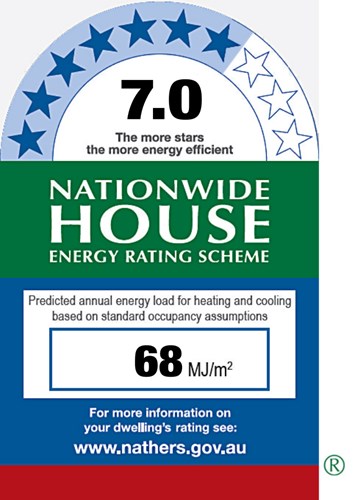As energy consumption prices rise, there is now a trend towards building energy efficient homes that will not only help the environment but will also save you money in the long run. So if you are in the market of building a green sustainable home, you should definitely consider the following:
Firstly, what is a “NatHERS rating”? Well this is the Nationwide House Energy Rating Scheme. Similar to the star rating schemes you see on electronic goods but for housing. The rating system uses computer simulations to determine the potential thermal comfort of Australian homes on a scale of zero to 10 stars. The higher the stars the less likely cooling or heating is required to stay comfortable. A zero star rating means the building shell does practically nothing to reduce the discomfort of hot or cold weather. A six star rating indicates good, but not outstanding, thermal performance. A 10 star rated home are unlikely to need any artificial cooling or heating. To help you achieve the highest rating as possible, the government has produced a website which includes architecturally designed floor plans and elevations for a single-storey house, adapted for three different block sizes. The designs will help you achieve a minimum 7 star energy rating and is a great resource commissioned by the Australian Government, that helps anyone plan to build a new sustainable home.
Sustainable, energy-efficient house plans can be downloaded here for free!!

This is normally standard as part of the BASIX requirements when building a new home. The benefit of a decent sized rain water tank is that it can significantly reduce water consumption when plumbed to the toilet, laundry and garden taps. It is the best way to water the garden.
The higher the rating the more energy efficient the appliances are. The highest rating television is 8 stars and 4.5 stars for a refrigerator.
Plumbing products such as taps, showers and toilets with high water efficiency as part of the WELS scheme (Water Efficiency Labelling and Standards) will reduce overall water consumption and cost. The scheme is designed to help you choose more water efficient products for your home.
New LED lighting will save you money and energy due to their long lifespans and efficiencies. LED lighting are extremely energy efficient and use only a fraction of the energy compared to traditional lighting saving you money and produce little heat.
Consider installing solar panels and a powerwall in your home. Harness the power of the sun and save on all your energy consumption costs. Best of all, you can now get a powerwall installed in your home to store energy for use at night rather than getting this from the grid.
Install high r-value rating insulation. Quality insulation will help reduce energy usage and provide a better level of resistance to heat in your home. This is very hard to upgrade later on so it is definitely worth considering including this as part of the build now to avoid any regrets.
Finally and probably the most simplest solution, is to make sure the house is designed to compliment the aspect in which the house sits. The location of windows and living areas can help provide natural lighting and keep you house warmer during the cooler months.
{{comments.Comment}}
{{replied.RepliedComment}}